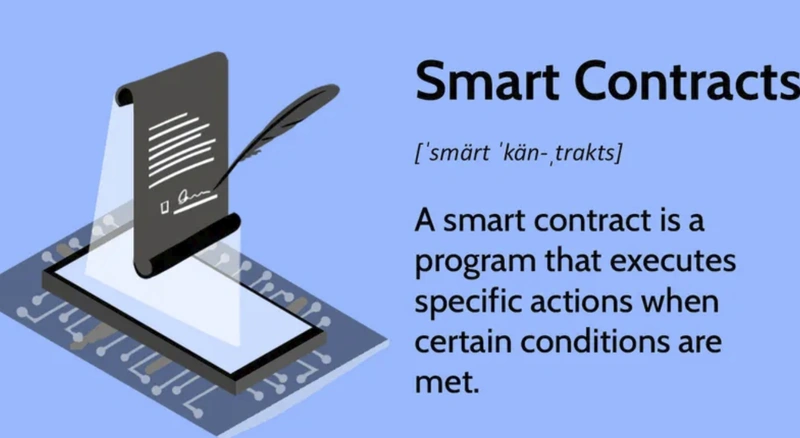Advanced blockchain course
advanced blockchain course- concensus mechanism explained
- 0 Enrolled
- intermediate levels
- Last updated 28 Jun 2025
- English
Course Outcomes
Ethereum Blockchain Course: Learning Outline
This outline provides a structured path for learning about the Ethereum blockchain, from fundamental concepts to advanced topics and practical application.
Module 1: Introduction to Blockchain Technology
- 1.1 What is Blockchain?
- Definition and core principles (decentralization, immutability, transparency).
- Brief history of blockchain and its origins (Bitcoin).
- Key components: Blocks, chains, distributed ledger, cryptography (hashing, digital signatures).
- Consensus mechanisms (brief overview of PoW, PoS).
- 1.2 Types of Blockchains
- Public, private, and consortium blockchains.
- Permissionless vs. Permissioned.
- 1.3 Why Blockchain?
- Problems solved by blockchain (trust, intermediaries, single point of failure).
- Use cases beyond cryptocurrency.
Module 2: Introduction to Ethereum
- 2.1 What is Ethereum?
- Origin and vision.
- The "World Computer" concept.
- Distinction from Bitcoin (programmability).
- 2.2 Ethereum Core Components
- Ethereum Virtual Machine (EVM): What it is, how it works.
- Accounts: Externally Owned Accounts (EOAs) and Contract Accounts.
- Transactions: Structure, lifecycle, gas, nonce.
- Blocks: Structure and validation.
- Gas: Concept, purpose, gas limit, gas price, transaction fees.
- Ether (ETH): The native cryptocurrency.
- 2.3 Ethereum Network and Clients
- Mainnet, testnets (Sepolia, Holesky).
- Ethereum clients (e.g., Geth, Parity - brief mention).
Module 3: Deep Dive into Ethereum Concepts
- 3.1 Cryptography in Ethereum
- Elliptic Curve Digital Signature Algorithm (ECDSA).
- Keccak-256 hashing.
- Public and private keys, addresses.
- 3.2 Consensus on Ethereum
- Transition from Proof-of-Work (PoW) to Proof-of-Stake (PoS) - The Merge.
- Staking and validators.
- Epochs, slots, attestations.
- 3.3 Wallets and Key Management
- Hot vs. Cold wallets.
- Browser wallets (e.g., MetaMask).
- Seed phrases (mnemonics) and hierarchical deterministic (HD) wallets (BIP-39).
- 3.4 Ethereum Block Explorers
- Using Etherscan or similar tools to view transactions, blocks, and contract data.
Module 4: Smart Contracts and Solidity
- 4.1 What are Smart Contracts?
- Definition and purpose.
- "Code is Law" concept.
- Turing completeness.
- 4.2 Introduction to Solidity
- High-level overview of the language.
- Basic syntax: data types, variables, functions, modifiers, events.
- Visibility specifiers (public, private, internal, external).
msg.sender,msg.value,block.timestamp.- 4.3 Developing Smart Contracts
- Development Environment Setup: Remix IDE (for beginners), Hardhat/Truffle (for more advanced).
- Writing your first basic contract (e.g., "Hello World", simple counter).
- Compiling and deploying contracts to a local blockchain (e.g., Hardhat Network, Ganache).
- Interacting with deployed contracts.
- 4.4 Smart Contract Design Patterns (Basic)
- Ownable, Pausable.
- Reentrancy guard (brief introduction to common vulnerabilities).
Module 5: Decentralized Applications (DApps)
- 5.1 What are DApps?
- Definition and architecture (frontend, smart contract backend).
- Key characteristics (open source, decentralized, no central point of failure).
- 5.2 Interacting with Smart Contracts from Frontend
- Web3.js / Ethers.js: Introduction to these libraries.
- Connecting to an Ethereum provider (e.g., MetaMask).
- Calling contract functions (read and write).
- Sending transactions.
- Listening for events.
- 5.3 Building a Simple DApp
- Frontend setup (HTML, CSS, JavaScript/React/Vue).
- Integrating Web3.js/Ethers.js.
- Developing a basic DApp (e.g., a simple voting app, a token sender).
Module 6: Ethereum Ecosystem and Tools
- 6.1 Development Frameworks
- Hardhat: Features, testing, deployment scripts.
- Truffle: (Optional, as Hardhat is more common now).
- 6.2 Oracles
- The oracle problem.
- How oracles bring off-chain data on-chain (e.g., Chainlink).
- 6.3 Token Standards
- ERC-20: Fungible tokens (basic understanding).
- ERC-721: Non-Fungible Tokens (NFTs) (basic understanding).
- ERC-1155: Multi-token standard (brief mention).
Module 7: Advanced Topics & Future of Ethereum
- 7.1 Scalability Solutions
- Layer 2 Solutions: Rollups (Optimistic, ZK-Rollups) - high-level overview.
- Sharding (future Ethereum roadmap).
- Sidechains.
- 7.2 Security Considerations
- Common smart contract vulnerabilities (reentrancy, integer overflow/underflow, front-running).
- Auditing smart contracts.
- Importance of secure coding practices.
- 7.3 Decentralized Finance (DeFi)
- Overview of common DeFi protocols (DEXes, lending platforms, stablecoins).
- 7.4 Non-Fungible Tokens (NFTs)
- Deep dive into NFTs, use cases, marketplaces.
- 7.5 Decentralized Autonomous Organizations (DAOs)
- Concept and basic governance mechanisms.
- 7.6 Ethereum's Roadmap
- Future developments (Danksharding, account abstraction, Verkle trees).
Module 8: Practical Project Ideas
- 8.1 Simple Voting DApp: Create a DApp where users can vote on predefined options.
- 8.2 Basic ERC-20 Token: Deploy your own simple fungible token.
- 8.3 NFT Minting Page: Build a DApp to mint a simple NFT.
- 8.4 Decentralized To-Do List: A DApp where to-do items are stored on the blockchain.
- 8.5 Simple Crowdfunding DApp: Allow users to contribute ETH to a project, with funds released upon goal achievement.
Course Description
Welcome to this learning session on Advanced Blockchain Course
In this course we shall address:
- Ethereum Basics and Platform Overview
- Ethereum Technical Foundations Explained
- Ethereum Foundation and Community
- Ethereum Accounts and Statistics
- Ethereum Standards and ElPs
- Ethereum Release Roadmap
- Ethereum 2.0 and Beacon Chain
- Shard Chains and Keccak-256
- Ethereum Transactions and Smart Contracts
- Smart Contract Vulnerabilities and EVM
- Solidity and Token Standards
- Blockchain Interoperability and Standards
Topics Covered
Frequently Asked Questions

This course includes
- Lectures 1
- Duration 0m
- Skills intermediate
- Language English
- Certificate Yes
By admin
Software Engineer